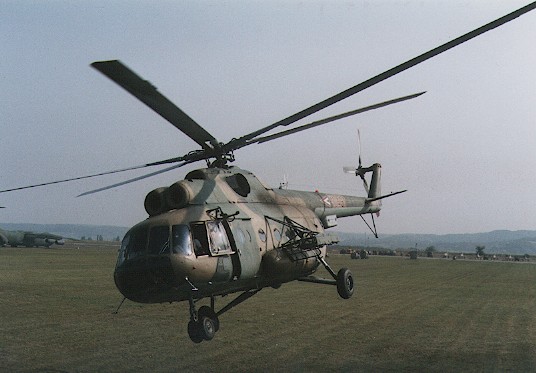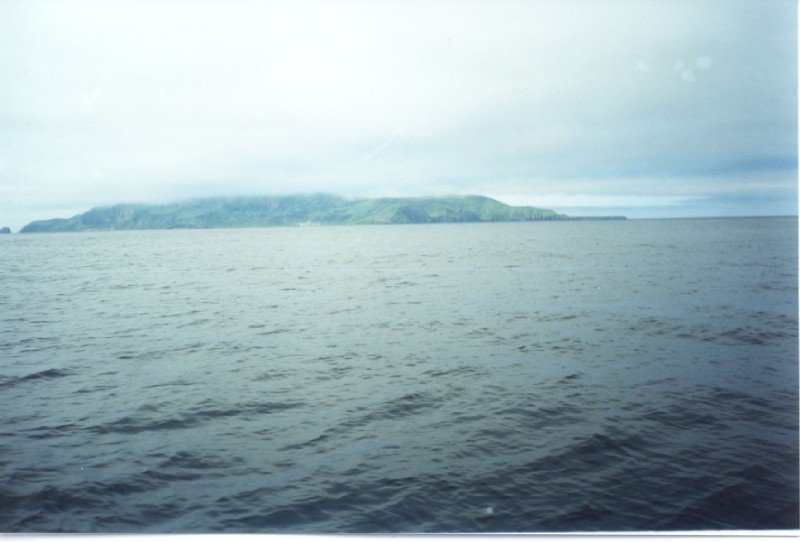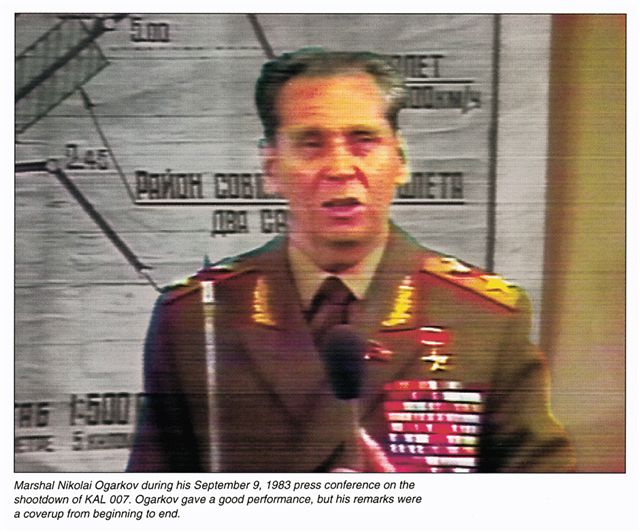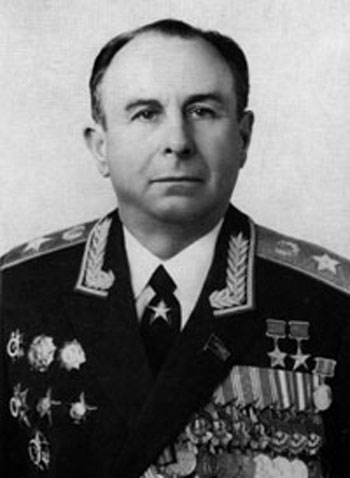|














| |
The Rescue
Cast of Characters
Kornukov—General Anatoli Kornukov, Commander Sokol Air Force Base (Sakhalin).
Kornukov was appointed Russia’s new Air Force Commander by Boris Yeltsin on January 22, 1998.
He served in this capacity until retiring in January 2002.
Gerasimenko—Lt. Colonel, Acting Commander, 41st Fighter Regiment
Novoseletski—Lt. Colonel, Acting Chief of Staff, Fighter Division, Smirnykh Air Force Base
Titovnin—Flight controller, Fighter Division Combat Control Center
Strogov—General, Deputy Commander, Far East Military District
Kamenski—General, Commander, Far East Military District Air Force
Times are given in Coordinated Universal Time (UTC, formerly Greenwich Mean Time or
GMT). In the air over Sakhalin, it was early in the morning of September 1, 1983.
The following is quoted from Rescue 007, pages 65 to 68 (with minor corrections and additions). The Russian transcripts are from the 1993 ICAO report.
Commentary is provided by Bert Schlossberg.
To KAL 007’s true position, Moneron Island itself, there were, indeed, at least two Soviet rescue operations sent out within minutes of KAL 007’s downing.
These missions are documented in the Russian ground-to-ground telecommunications transcripts, and in view of the specificity of KAL 007’s location, there is no reason to doubt their success.
The first mission involved rescue helicopters, border guards and the KGB, and was ordered at 18:47, just 21 minutes after missile impact and nine minutes after KAL 007 had reached point zero altitude, point zero being when it went below radar—not when it landed or impacted.
Novoseletski: (18:47)
You don’t have the sunrise there yet?
Titovnin:
No, it will be in about thirty minutes.
Novoseletski:
Prepare whatever helicopters there are. Rescue helicopters.

Mi-8 multi-purpose copter. Type used for SAR missions
Titovnin:
Rescue?
Novoseletski:
Yes. And there will probably be a task set for the area where the target was lost.
Titovnin:
Roger. Is this to be done through your SAR [Search and Rescue]?
Novoseletski:
Eh?
Titovnin:
Assign the task to Chaika through your SAR, Comrade Colonel, Khomutovo [Civilian and military airport at Yuzhno-Sakhalinsk City in southern
Sakhalin] does not come under us and neither does Novoaleksandrovska. We have nothing here.
Novoseletski:
Very well.
Titovnin:
Novoaleksandrovska must be brought to readiness and Khomutovo. The border guards and KGB are at Khomutovo.
“Chaika” is the call sign of the Far East Military District (FEMD) Air Force Command Post.
Consequently, this first documented rescue mission could only be effected by order of the FEMD, which was second in jurisdiction to the Soviet Far East Military Theatre of Operations.
Neither the shooting down nor the rescue of Flight 007 was, therefore, of local decision.
Apparently, neither Smirnykh Air Force Base in central Sakhalin (under the Tactical Air Command and from where the MiG23 ordered to guarantee destruction of KAL 007 was based) and Sokol Air Force base in southern Sakhalin (under the Air Defense Command where Osipovich and his SU-15 were based) had any available rescue helicopters.
Therefore, the jurisdictional step up to the Far East Military District Air Force was required to bring the out-of-jurisdiction Khomutovo Air Base into action.
Khomutovo was the civilian and military airbase at Yuzhno (Southern) Sakhalinsk City.
The second mission involved the civilian ships in the vicinity of Moneron as well as the border guards.
This mission was ordered at 18:55; just 29 minutes after missile impact and 17 minutes after KAL 007 had reached point zero altitude.
(That at least one Soviet naval rescue mission had been ordered even
before KAL007 had reached the surface of the waters off Moneron is
attested by the following - taken from the Izvestia testimony of a Soviet
Naval Specialist who had been involved in the rescue mission: "When
we learned that the aircraft had been attacked, and that weapons had been
used, we began to analyse when it might possibly come down. Ships
were ordered to the anticipated [emphasis added] area.
Several ships headed there at once at full speed...")
Gen. Strogov: (18:54)
Hello… Hello, Titovnin… You s... [obscenities] I’ll lock you up in the guard house.
Why don’t you pick up the phone?
Titovnin:
Comrade General, everyone was busy here.
Strogov:
You have nothing there to be busy with. Busy! What kind of nonsense is that?
So, where is Kornukov?
Titovnin:
Kornukov is here.
Strogov:
Put him on the phone.
Titovnin:
One minute. He is reporting to Kamenski, Comrade General.
Here is clear evidence that the shoot-down of KAL 007 and the rescue of its passengers were not decisions made by local commanders but emanated from the highest echelons of the Soviet military.
Strogov: (18:55)
So, what you need to do now. Contact these ... [obscenities], these sailors, these, what do you ... [obscenities]?
Titovnin:
Border guards?
Strogov:
Huh?
Titovnin:
Border guards?
Strogov:
Well, the civilian sailors.
Titovnin:
Understood.
Strogov:
The border guards. What ships do we now have near Moneron Island, if they are civilians, send [them] there immediately.
Note the consistency of Strogov’s site identification with Kornukov’s.
Both generals simply specify it as “Moneron.” Ships that are already “near Moneron” are sent to Moneron itself. This transcript puts the lie to the Soviet claims, from Day One and on, that they did not know where the plane went down, as well as exposing the Soviet deception in staging their search and rescue operations in various parts of international waters.
Among the first proponents of this lie was Marshal Nicolay Ogarkov, U.S.S.R. Chief of General Staff, when he stated on
September 9, 1983, at a press conference, "We could not give the precise answer about the spot where it [KAL 007] fell because we ourselves did not know the spot in the first place."
The United States (and the rest of the world for the matter) had been effectively and tragically duped!
For an account of how the Soviets duped the U.S., click here.

Source: www.cia.gov
Titovnin:
Understood, Comrade General.
This second of the documented, authorized rescue missions was also authorized by highest authority.
General Strogov was directly subordinate to General Ivan Moseivich Tretyak, the Commander of the Far East Military District.
It was with General Tretyak that General Vladimir L. Govrov, the Commander of the Far East Theatre of Operations had come into agreement that the “intruder” aircraft must be shot down.
Among the ground-to-ground communications appended to the 1993 ICAO Report, the following conversation (unidentified speakers) is recorded at 18:45:
“Weapons were used, weapons authorized at the highest level. Ivan Moiseevich authorized it. Hello, hello.”
 |
General Ivan Moseivich Tretyak
Used with permission, www.peoples.ru |
“Say again.”
“I cannot hear you clearly now.”
“He gave the order. Hello, hello, hello.”
“Yes, yes.”
“Ivan Moseivich gave the order, Tretyak.”
“Roger, roger.”
“Weapons were used at his order.”
From Rescue 007, pages 114-115 (with minor modifications):
According to the Republican Staff Study/”CIA” Report, “sensitive special intelligence” (NSA intercepts) revealed the following:
About four hours after the shoot-down, Soviet Air Defense command posts reported that Soviet pilots were saying that a civilian passenger plane had been shot down instead of a U.S. RC-135 reconnaissance plane, and they (the command posts) were expressing regret, both that they had not downed the RC-135 and that now the Americans would accuse them of killing Americans.
The Study asks how, while flying overhead, could Soviet pilots conclude that Americans were among the passengers?
They might conclude from seeing the aircraft’s distinctive hump as the plane floated on the water that it was a passenger plane that was shot down, as in 1983 there were no military versions of the Boeing 747.
And they might have seen the distinctive bird emblem on the tail of the aircraft—the symbol in use then by Korean Air Lines—but this would not indicate the nationalities of the passengers.
The Study would conclude that the only way Soviet pilots could know that Americans had been killed is if they had heard that information on their radios during the time the rescue was actually taking place.
“Thus the only way that Soviet pilots could possibly have identified the nationality of some of the KAL 007 passengers as Americans, from the air, would have been from possible emergency radio communications which U. S. Intelligence did not intercept, from either the stricken airliner ditched at sea, or from its life rafts, or from Soviet rescue boats.”
(Republican Staff Study/”CIA” Report, pg. 47)
|

